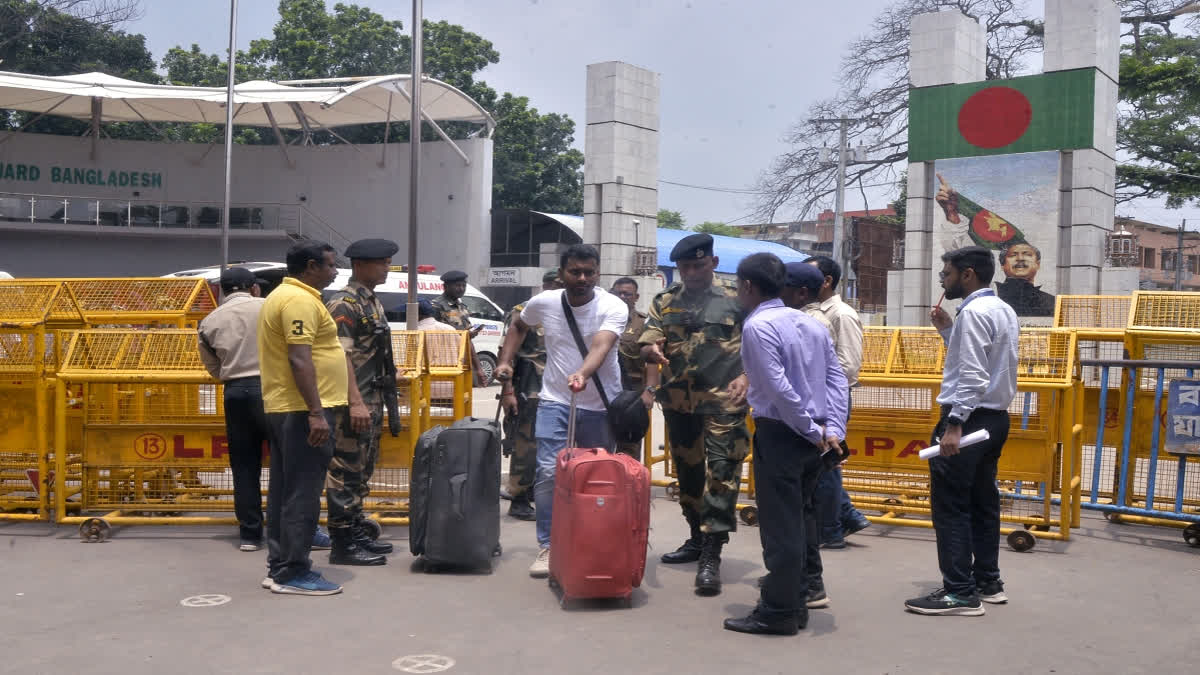What played out in Bangladesh over the past few weeks brings back memories of the Arab Spring of 2010-11, where a single incident sparked widespread violence resulting in overthrowing long-term authoritarian rulers across North Africa and the Middle East. The spark in Bangladesh was reservations, reducing employment opportunities, which were subsequently culled.
As in the case of Hong Kong in 2019 and Sri Lanka in 2022, it was students who spearheaded the agitations. In Bangladesh, these protests were subsequently infiltrated by the Jamaat-e-Islami. Post being banned the Jamaat-e-Islami had deep hatred for Sheikh Hasina. This is why residences and monuments relating to the family including the statue of Sheikh Mujibur Rehman were targeted.
As in the Arab Spring, security forces found it difficult to control large violent mobs without excessive bloodshed, resulting in leaders either resigning or taking refuge elsewhere. The Tunisian President fled to Saudi Arabia, Hosni Mubarak of Egypt resigned and Gaddafi of Libya was killed. In the case of Bangladesh, Sheikh Hasina was compelled to leave the country. In most cases, rulers resigned or fled after the army refused to fire on protestors, similar to Bangladesh.
In nations where the Arab Spring occurred, basic demands were democracy and human rights. Hasina was almost a dictator, who had subdued her opponents, including jailing them or banning political parties, as also employing security forces to crush protests. She was converting Bangladesh into a one-party country. Recently concluded elections were a farce with the two largest political parties either not contesting or banned. The quotas were just a spark.
Apart from Tunisia, no other country emerged as a stable democracy post the Arab Spring, the worst being Yemen and Libya. How will Bangladesh emerge is to be seen. Will the students hold sway or will political parties brush them off is unknown.
Till when will the interim government run the country is another factor. The last time the Bangladesh army ruled through an interim government for two years before elections were announced.
In all Arab Spring nations, initial targets post the removal of the head of state, were members of the dreaded police and the ruling party. The same is the state in Bangladesh, where members of the Awami League are being systematically hunted down. The police have vanished fearing for their lives. Minorities become easy targets in a lawless state. It always takes time before anarchy is controlled and normalcy restored. A similar scenario is emerging in Bangladesh.
Major causes for uprisings in the Arab Spring were frustration due to corruption in government and lack of economic opportunities. The same happened in Bangladesh. Employment opportunities were reduced by quotas allocated to different groups including dependents of 1971 veterans, while corruption was rampant.
Bangladesh was severely impacted by COVID as also the Russia-Ukraine conflict. Prices of essential commodities including oil rose sharply while its exports dropped. It never recovered, adding to discontent amongst the public.
There are conspiracy theories doing rounds of possible involvement of agencies of vested nations stoking the uprising in Bangladesh. Realistically, every power has interests in other countries. The US, China and India have theirs in Bangladesh. While India backed the government, few were pushing for a change. Pakistan too has its own agenda in Bangladesh, especially as India was a favoured neighbour.
Such interference is a global phenomenon. India has been accused of manipulating its interests in certain countries in its neighbourhood. How true are the accusations may never be known, as most operations are clandestine.
Within India too, there are institutions and organisations (political and non-political) funded and influenced by other nations to push their favourable agendas. The same is for Bangladesh. In Bangladesh, how effective were foreign hands in promoting the uprising is to be seen.
